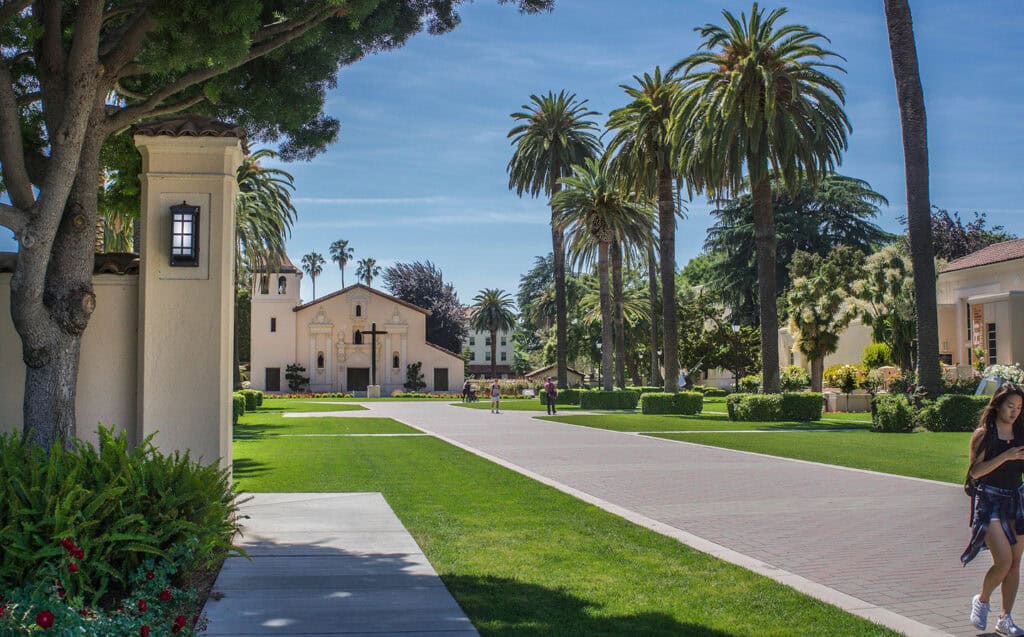
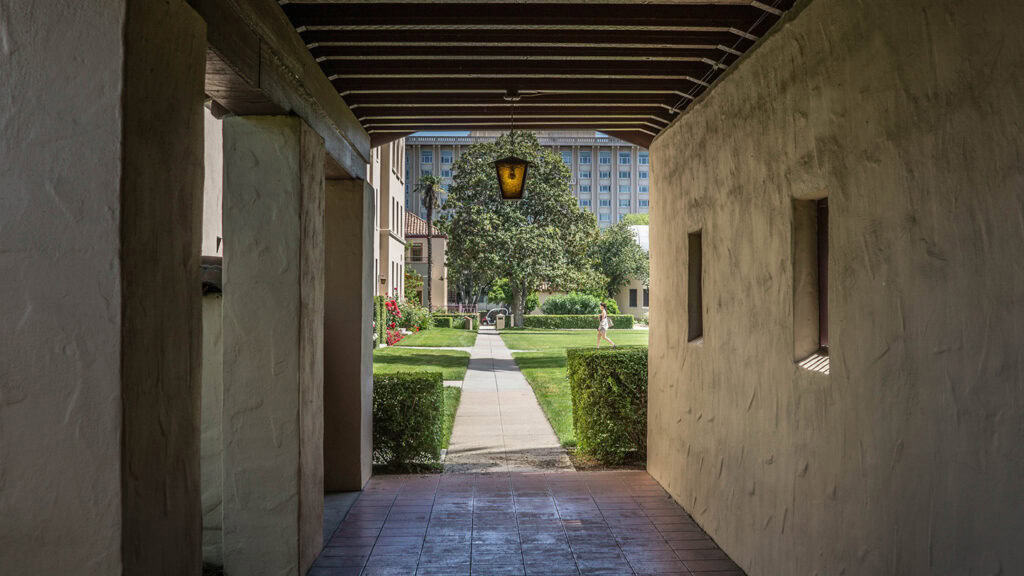
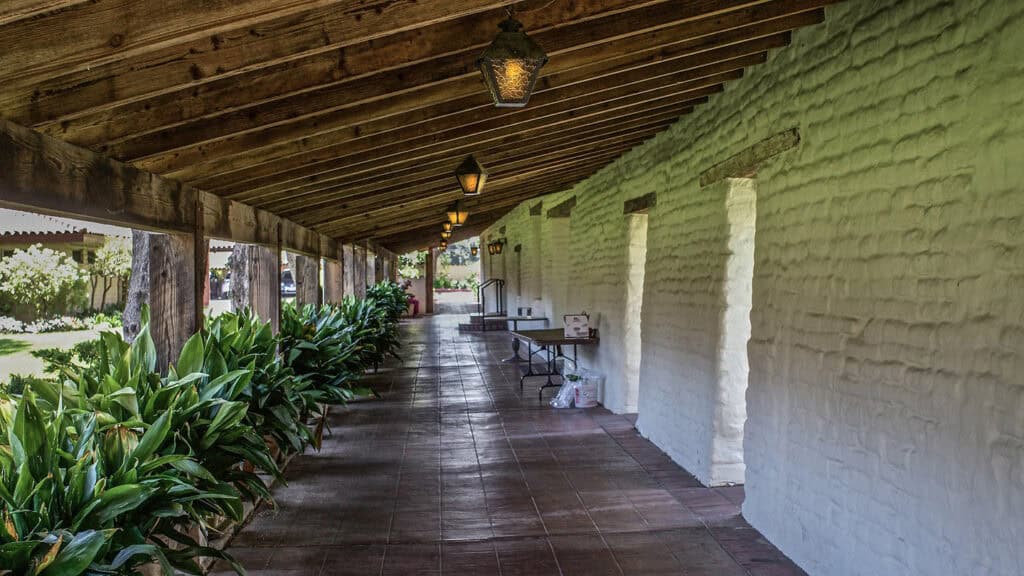
Do you want an architectural style that blends beauty, utility, and culture? Mission Style Architecture has a timeless design. It is inspired by Spanish Colonial history and the Arts and Crafts Movement.
At Landmarks Architects, we celebrate the charm of Mission Style homes. They draw inspiration from Spanish missions in California and the Southwest. This guide explores:
- The historical origins of Mission Style Architecture
- Key features that define its aesthetic
- The evolution and revival of this beloved style
- Notable examples that showcase its charm
Ready to explore the world of Mission Style Architecture?
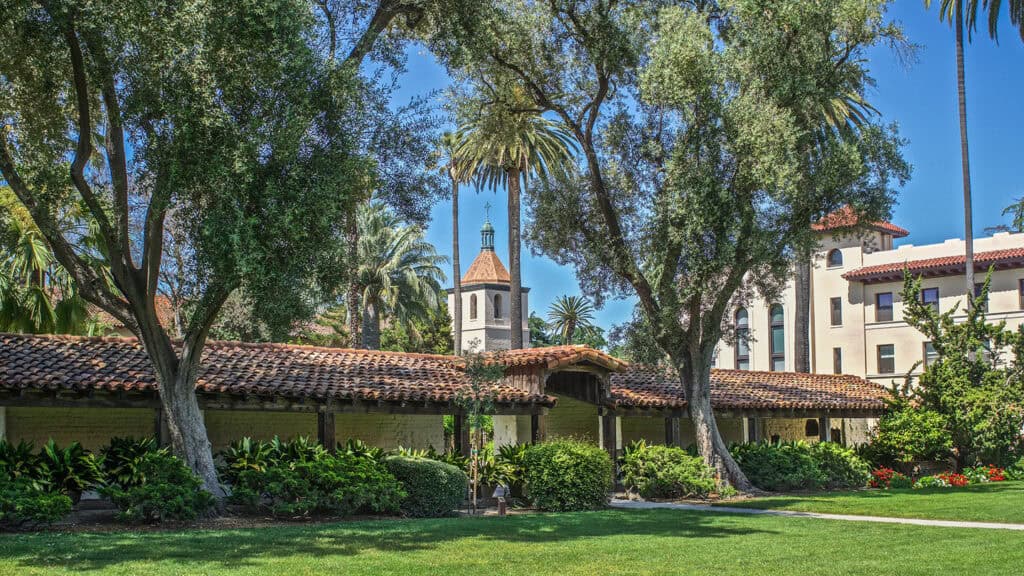
Architectural Heritage
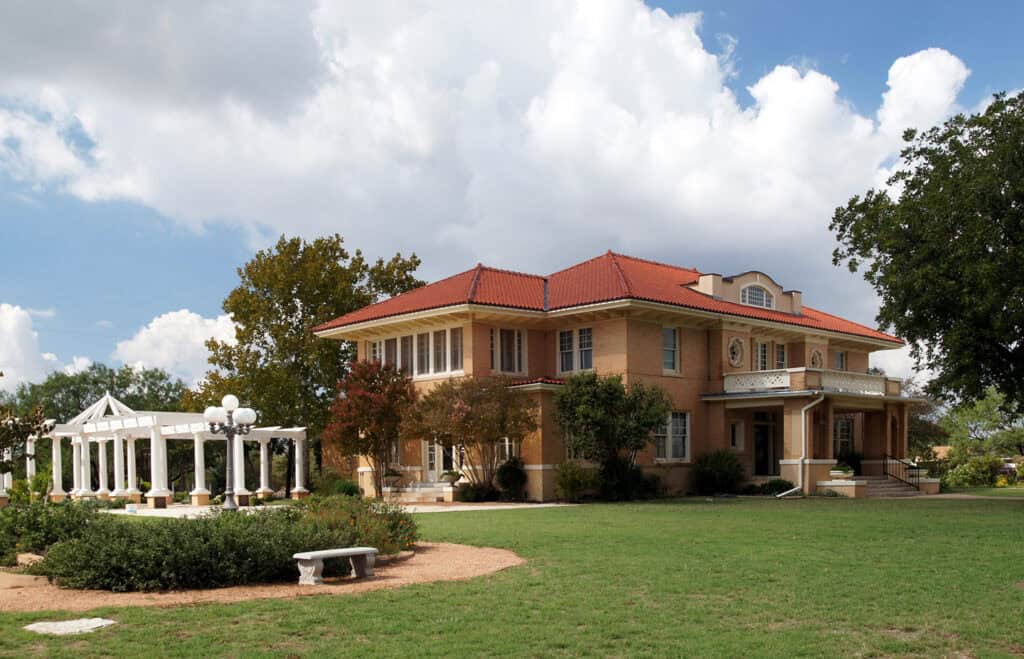
Mission Style Architecture began in the late 19th century. It is rooted in the American Arts and Crafts movement. It drew inspiration from Spanish Colonial missions in California and the Southwest, especially around San Diego.
Key architects like Arthur Page Brown and Irving Gill helped popularize this style. It sought to capture the region’s culture and promote craftsmanship and community.
See also: Midwest Landmarks: 10 Architectural Marvels You’ll Love
Key Features of Mission Style Architecture
Mission Revival Style has a simple, functional design. It blends Spanish and Californian influences. Here are the defining elements:
1. Stucco Walls
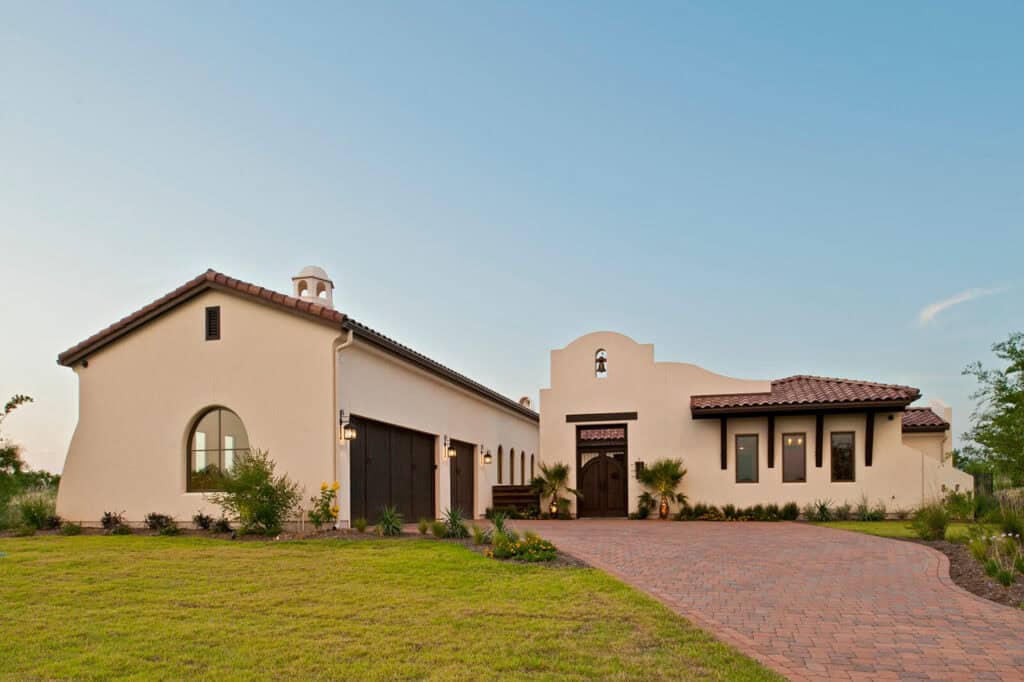
Stucco walls are one of the most iconic features. They’re usually white or beige. This creates a clean, cohesive look. The plaster exterior suits the landscape and withstands the Southwest’s varied climate.
2. Arched Doorways
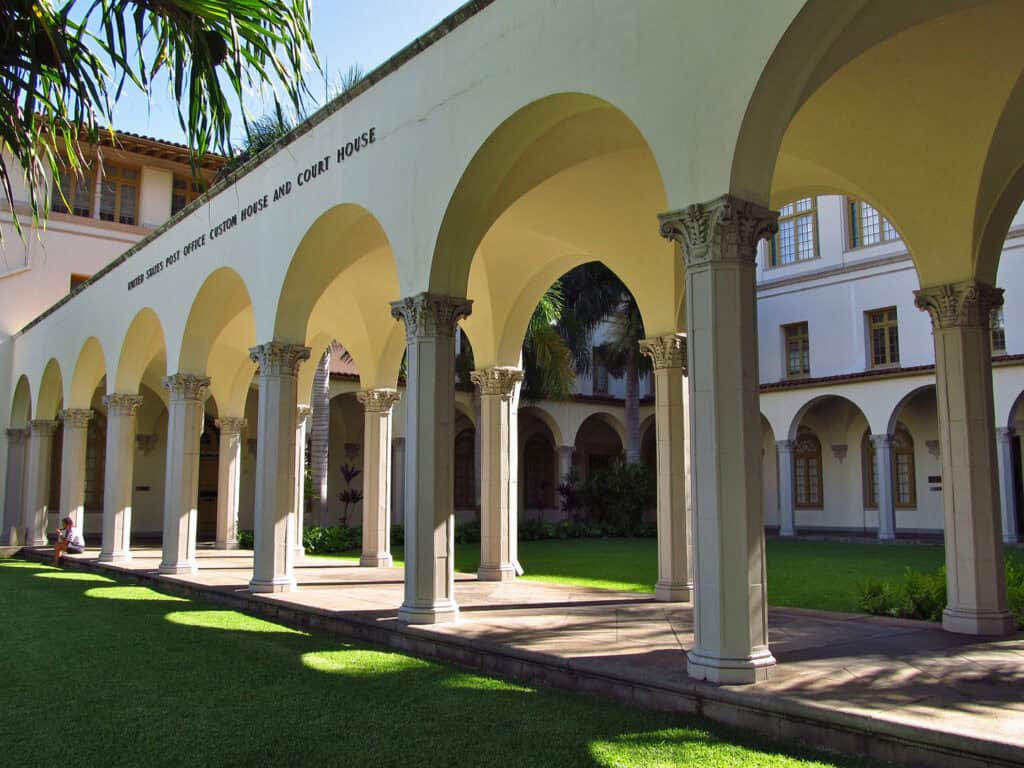
Mission style homes have arched doorways and windows. They reflect the Spanish Mission heritage. These wide, thick arches improve the structure and beauty. They connect the design to California Missions.
3. Red Tile Roofs
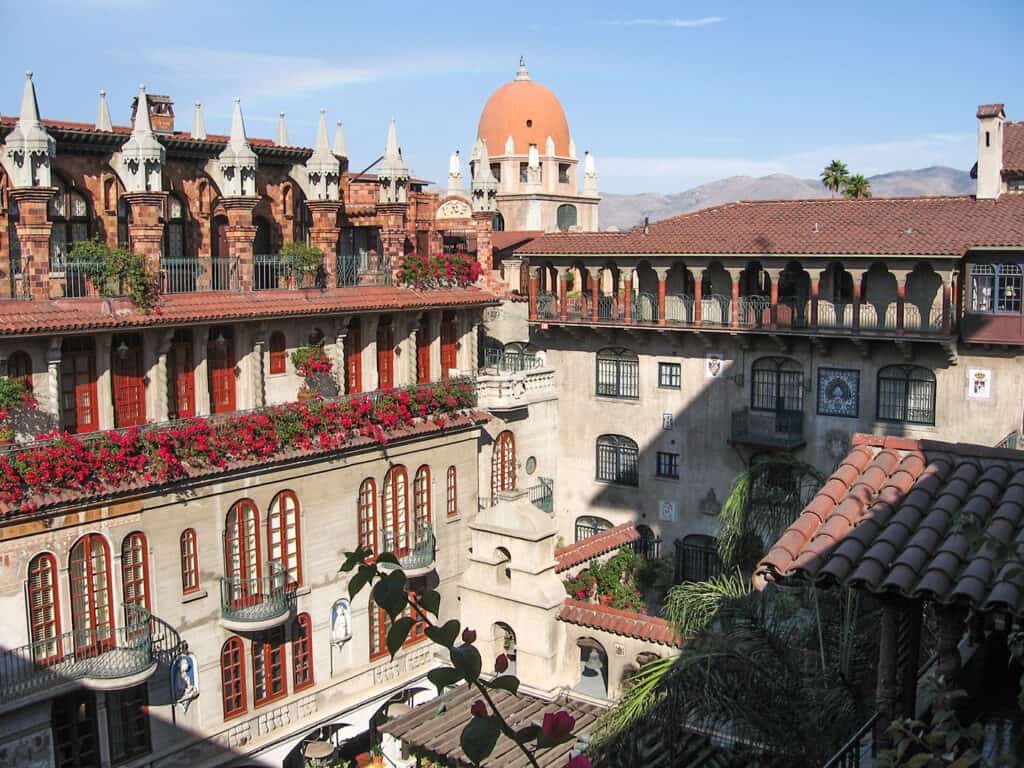
Red tile roofs with low-pitched designs are a staple of Mission Revival architecture. Clay tiles, often seen on bell towers, help regulate interior temperatures. They also harmonize with the natural surroundings.
4. Simple, Horizontal Lines
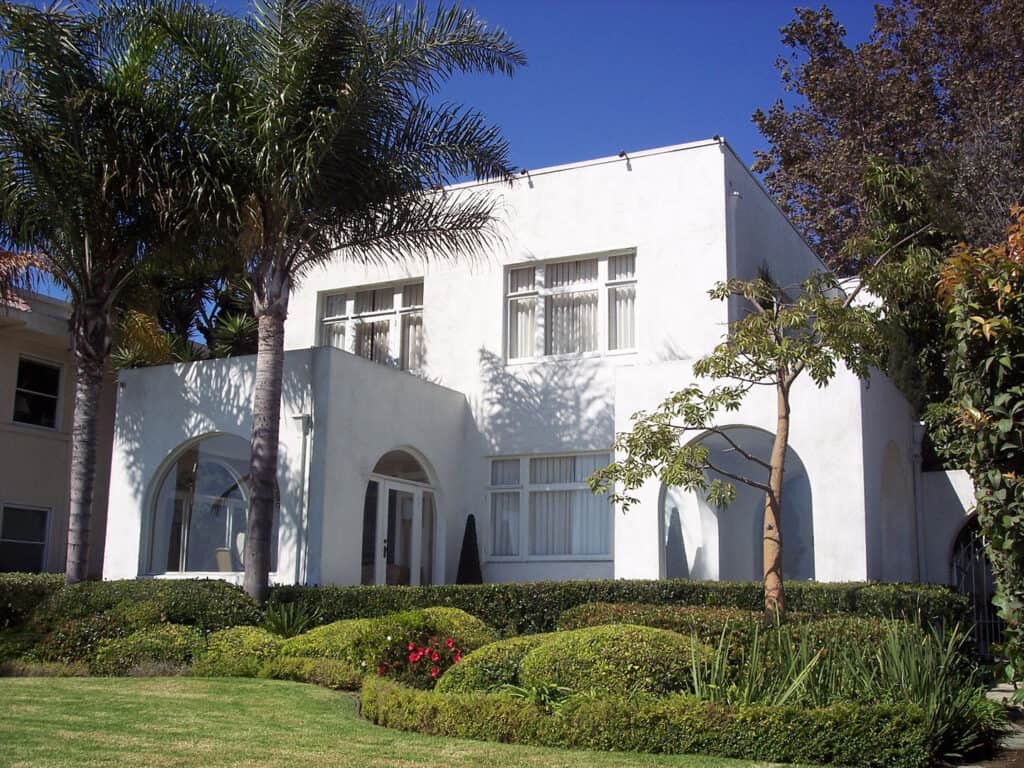
Mission architecture features horizontal lines and clean, linear forms. It showcases a simple style that uses natural building materials. This creates a look of stability and permanence.
5. Courtyards and Outdoor Spaces
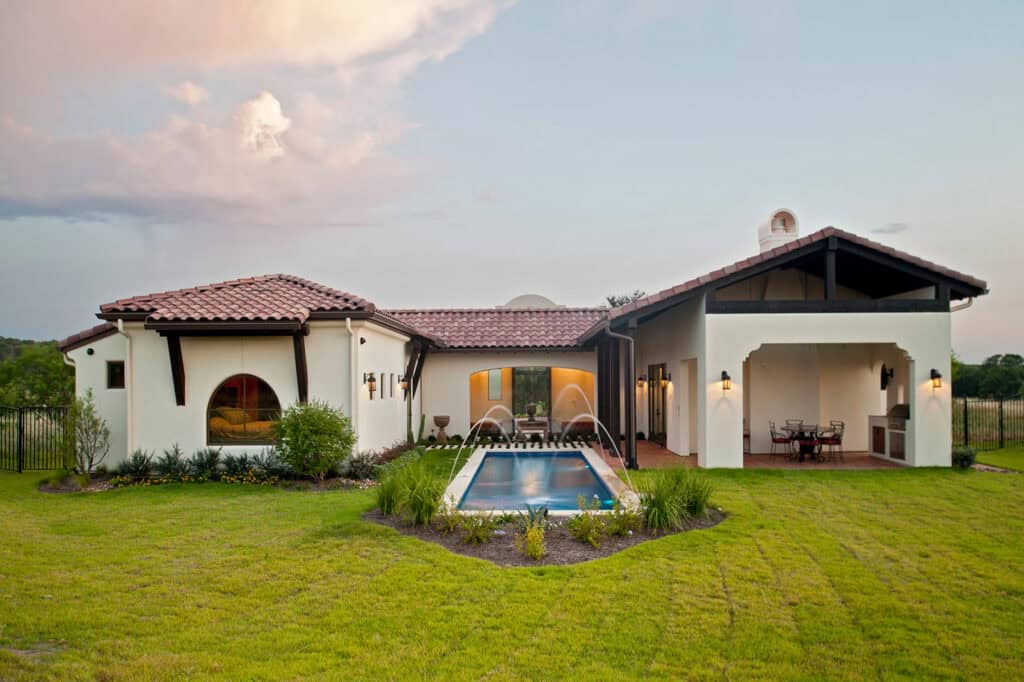
Many Mission style homes have courtyards and outdoor spaces. They extend the interiors into the open air. These areas often have fountains, landscaping, and seating. They evoke the tranquil design of the original Spanish missions.
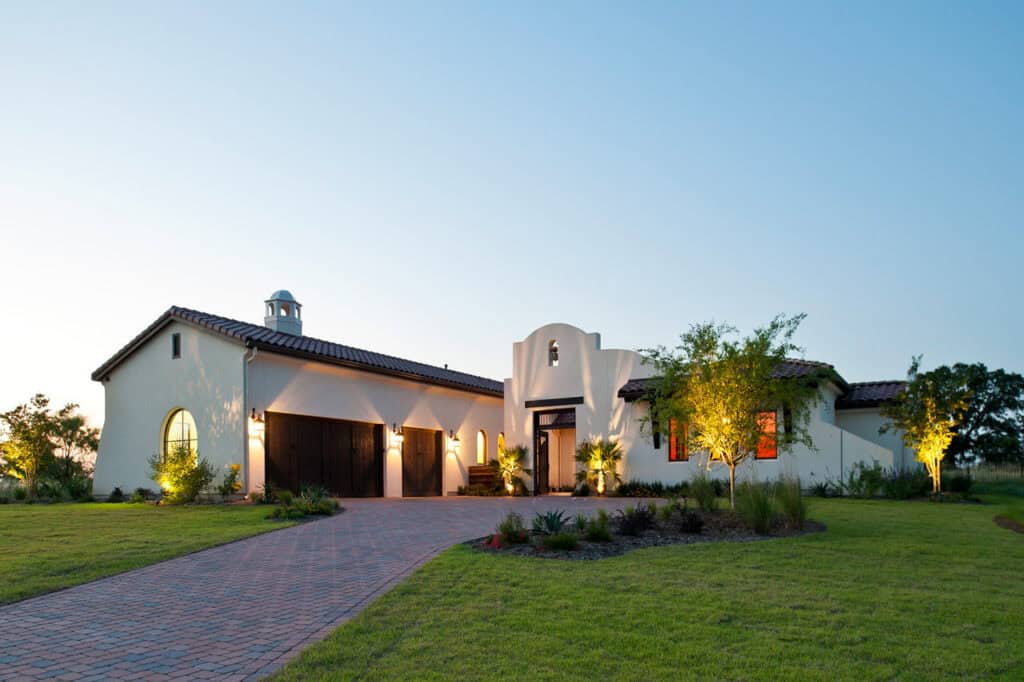
6. Decorative Ironwork and Wooden Beams
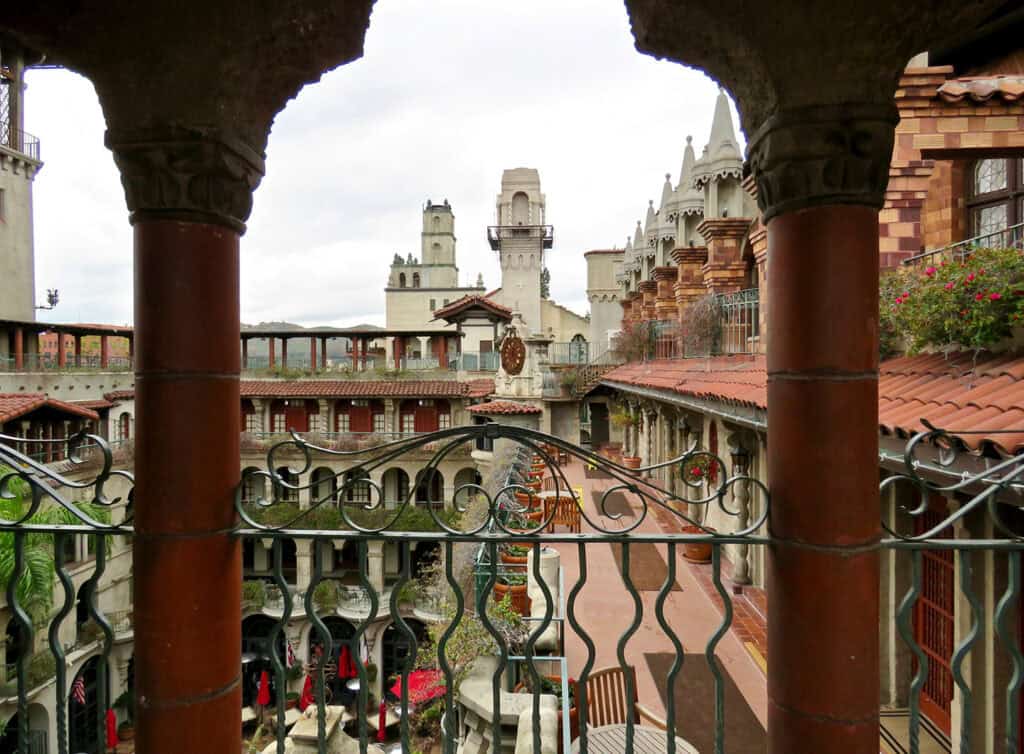
Wooden beams and decorative ironwork are common features in Mission Revival design. Exposed rafters and wrought iron details are in the windows, gates, and wood accents. They showcase the craftsmanship at the heart of the style.
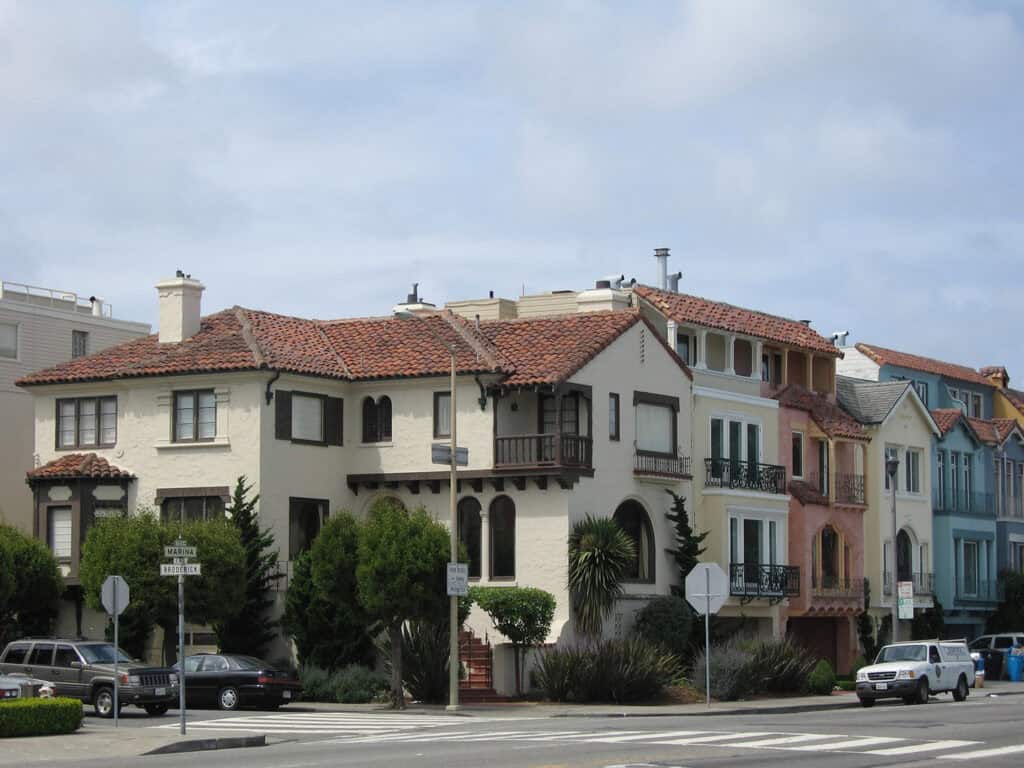
Evolution and Revival
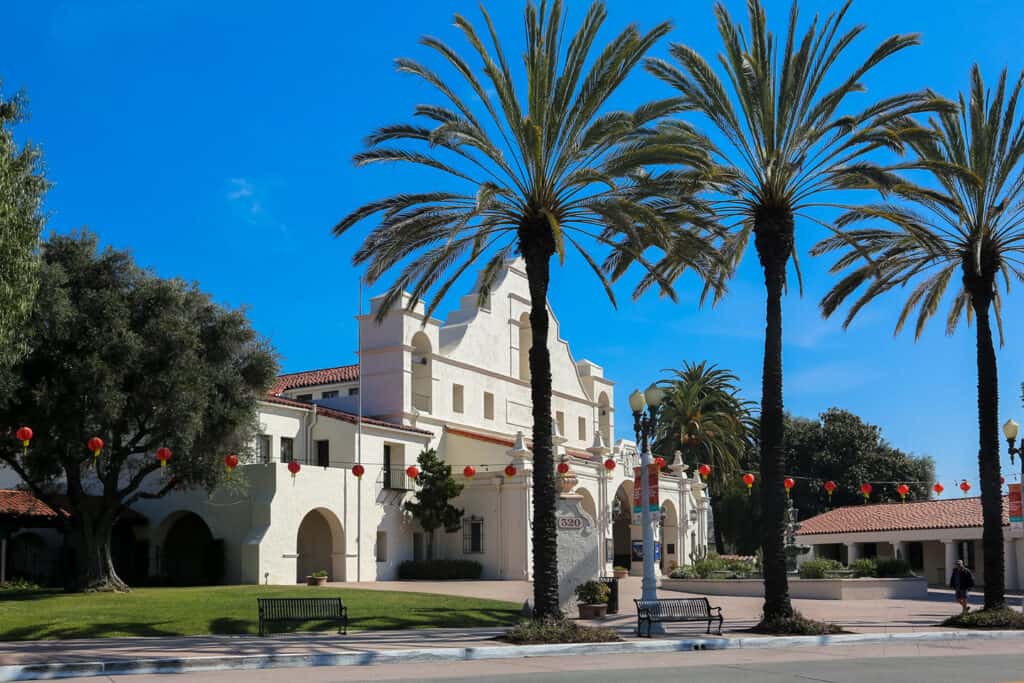
The Mission Revival Style, inspired by early Spanish Colonial missions, emerged in the late 19th century. The style gained momentum in early 20th-century Southern California. Architects used deep windows, wide eaves, and overhanging roofs. They aimed to capture the spirit of Spanish mission style.
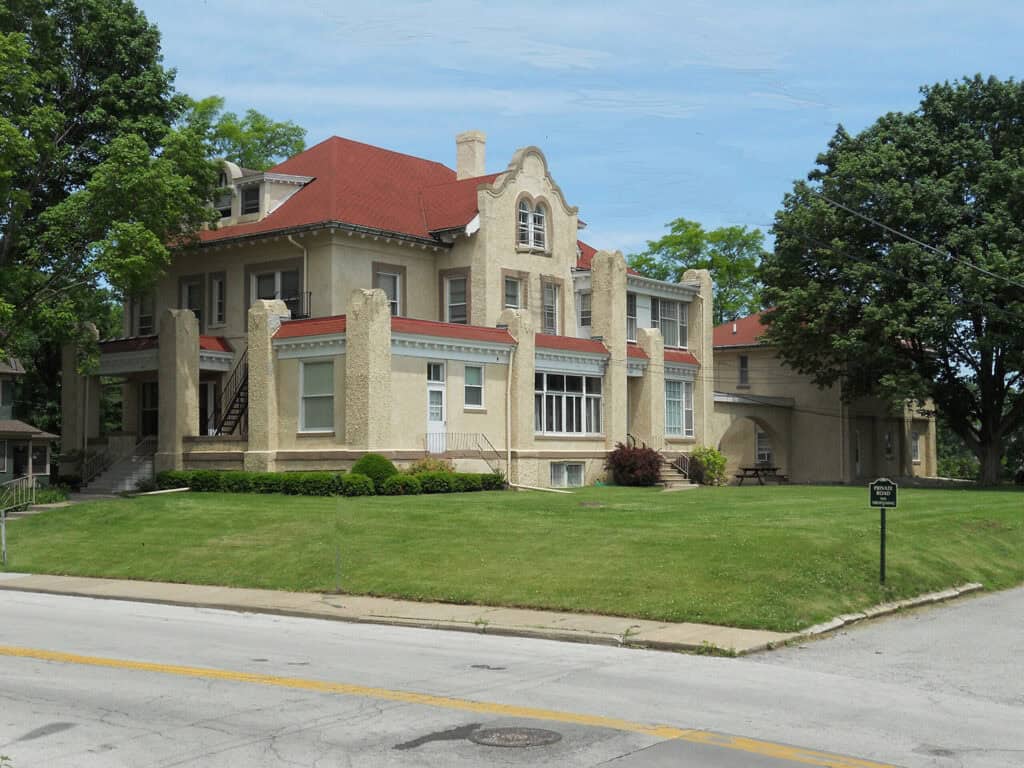
This revival, fueled by the Arts and Crafts Movement, celebrated handcraft and nature. It created a Southern Californian aesthetic that endures today.
See also: 1970s Style in House Architecture: 10 Must-Know Features
Famous Examples of Mission Style Architecture
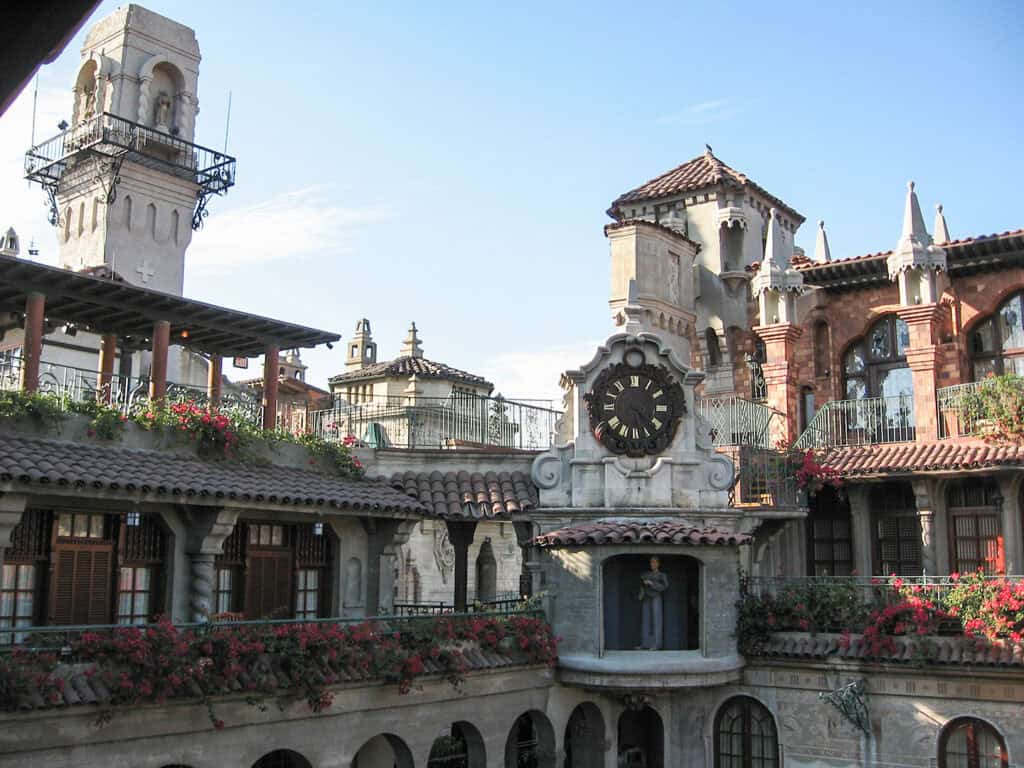
The Mission Inn (Riverside, California): This historic hotel is a notable example of Mission Style architecture. It features characteristic elements such as arched doorways, red clay roofs, and white stucco walls, all of which embody the revivalist theme of the style.
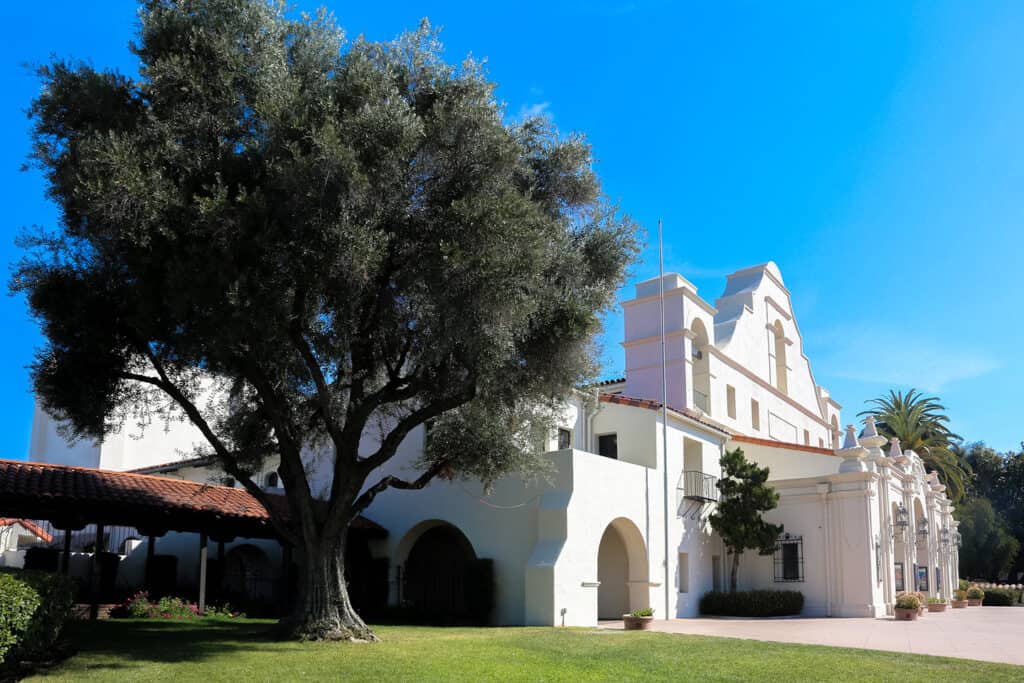
San Gabriel Mission Playhouse (San Gabriel, California): This theater, built in 1927, was designed in the Mission Revival style and stands as a tribute to the area’s Spanish colonial heritage.
See also: Los Angeles Architectural Styles: Top 12 Iconic Features
Mission Style Architecture: A Recap
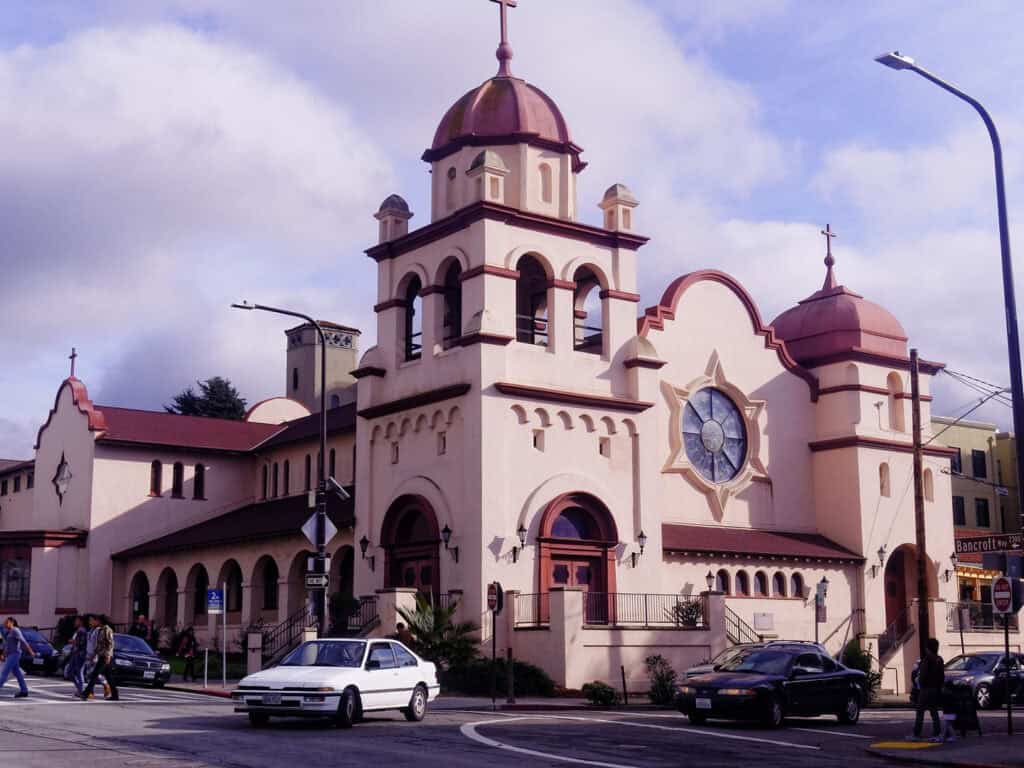
Mission Style Architecture, influenced by Spanish Colonial designs, stands out for its use of white stucco walls, red clay roofs, bell towers, and arched openings.Wood accents add warmth and character. The focus on simplicity and craftsmanship makes this style timeless.
Today, Mission Revival continues to shape homes and public buildings across the Southwest. Its legacy is a mix of cultural history and 20th-century art.










